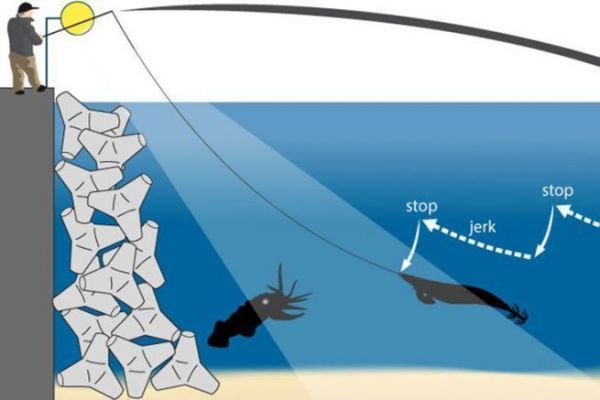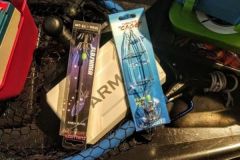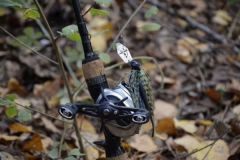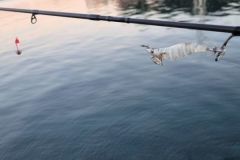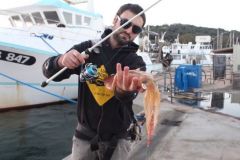Cuttlefish are voracious cephalopods that can be found from the surface to great depths all over France. They can be found above the kelp in shallow water in harbours, as well as on the seabed offshore. Are you looking for sea bass on soft lures and coming across large, soft bites? No doubt, a cuttlefish is busy shredding your lure! In this case, switch to the jig, a hard lure specially developed for this cephalopod. Here's a look at a particularly fun technique: jigging from the shore.
Identity card
- Sepia officinalis (Linnaeus, 1758)
- Also known as sepia, casseron (small), castron (small), margatte (small)
- This cephalopod has an oval-shaped body housing an internal shell: the cuttlebone. It has a fin all along its body and its large head has two lateral eyes and hides a mouth with a beak. It has 10 tentacles with suckers. Its skin can change color abruptly under the action of a highly evolved brain.
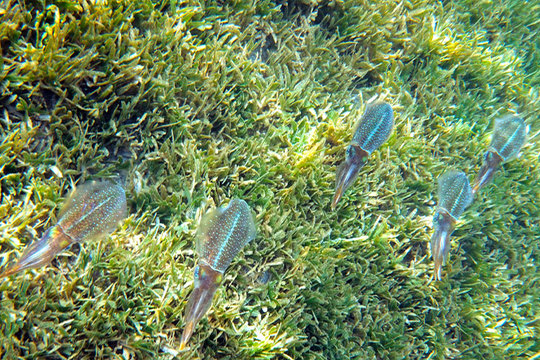
Fishing techniques
Cuttlefish can be found on free-lines, floats, baitcasters, live drifters and stillbait drifters. As well as lures, you'll be able to pick up cuttlefish on jigs and hard lures. That said, if the lure or bait is not fitted with a special cephalopod crown, the cuttlefish will have little chance of biting.
The most fun way to fish for this cephalopod is with a jig. This practice, using high-modulus carbon rods, has become very popular and is known as eging. Although cuttlefish are often caught between 6 and 30 m depth by boat, here we're looking for cuttlefish posted in harbour areas between the surface and 10 metres depth.
Lighted areas dotted with rocks are the best spots. We cast to the spot and let it sink for a few seconds. Initially, you can let it sink to the bottom to detect the presence of cuttlefish. Then retrieve with a jerk followed by a long pause to let the jig slide as much as possible. Between two jerks, keep the jig taut so you don't miss any bites on the way down. When you get close to the bank, you may see the cuttlefish come out of the rocks to grab the lure, whereas near the bottom the rod will suddenly bend under the pull of the cuttlefish.
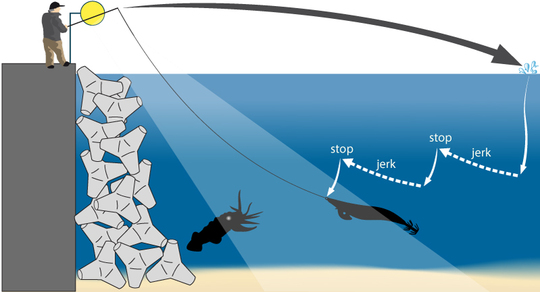
A dry but controlled hooking action is essential to bite the fragile-skinned cephalopod. Hook crowns have no barbs, so you need to maintain constant contact with your catch. Once hooked, you need to grind continuously to avoid leaving any slack in the line. Slightly loosen the drag to avoid stalling during rushes.
The eging rig
The rig is composed as follows:
- Connecting knot: peixet knot
- Braid: 0.12 to 0.14 mm
- Fluorocarbon: 0.24 to 0.35 mm
- Jig: size 2.0 to 4.0


 /
/ 